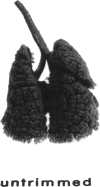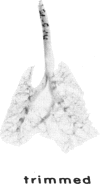Abstract
Because the initial deposition pattern of inhaled particles of various toxic agents determines their future clearance and insult to tissue, respiratory tract deposition is important in assessing the potential toxicity of inhaled aerosols. Factors influencing the deposition of inhaled particles can be classified into three main areas: (1) the physics of aerosols, (2) the anatomy of the respiratory tract and (3) the airflow patterns in the lung airways. In the physics of aerosols, the forces acting on a particle and its physical and chemical properties, such as particle size or size distribution, density, shape, hygroscopic or hydrophobic character, and chemical reactions of the particle will affect the deposition. With respect to the anatomy of the respiratory tract, important parameters are the diameters, the lengths, and the branching angles of airway segments, which determine the deposition. Physiological factors include airflow and breathing patterns, which influence particle deposition. Various lung models used in predicting particle deposition are reviewed and discussed. The air-way structures of various animal species are compared, showing the unique structure of the human lung compared to the animal species under study. Regional deposition data in man and dog are reviewed. Recent deposition data for small rodents are presented, showing regional difference in deposition with the right apical lobe having the highest relative deposition.
Full text
PDF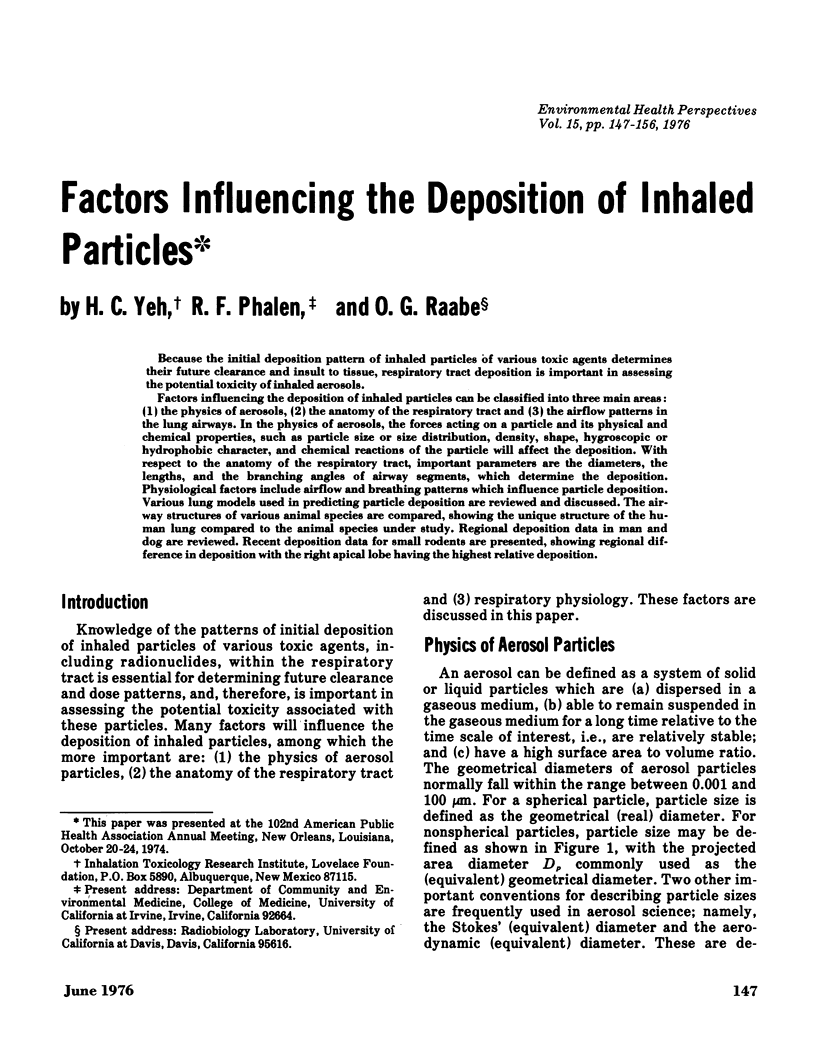
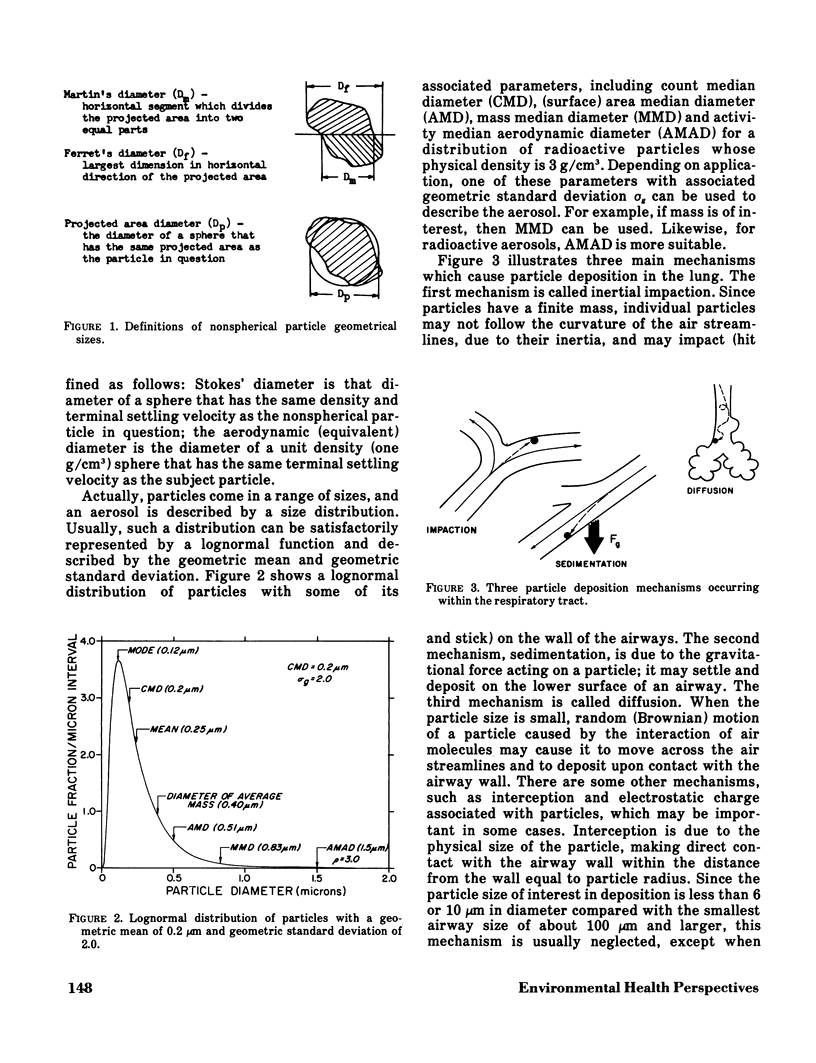
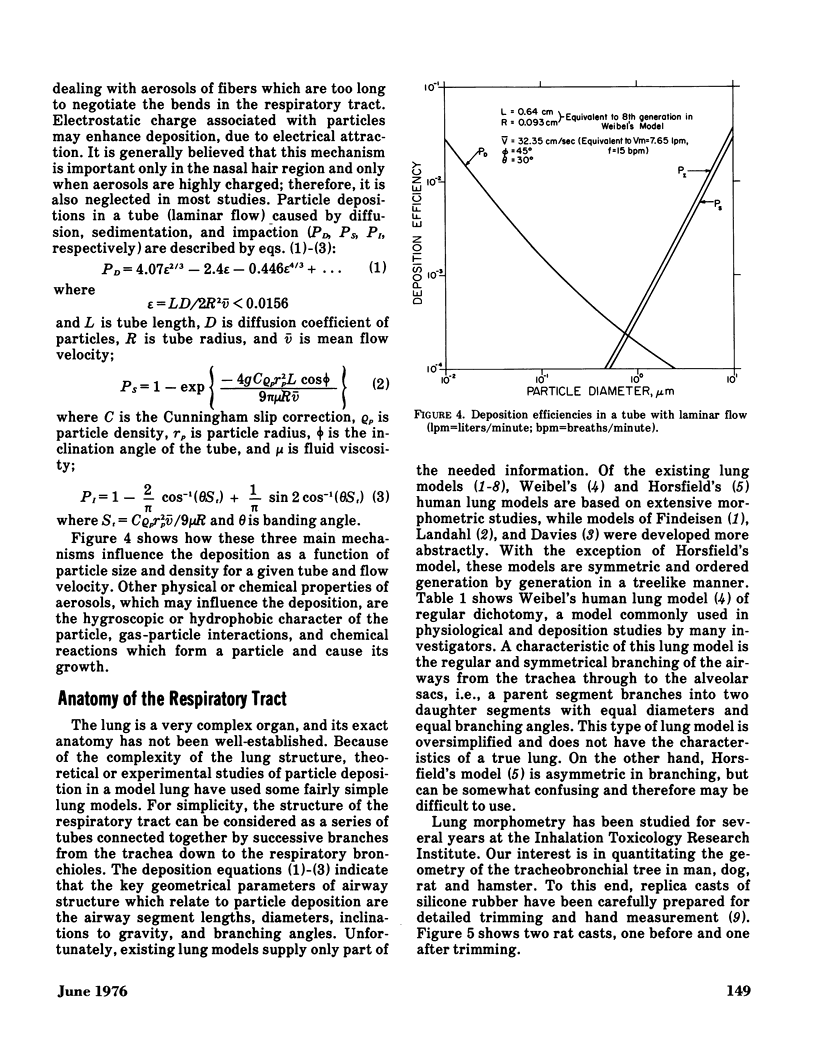
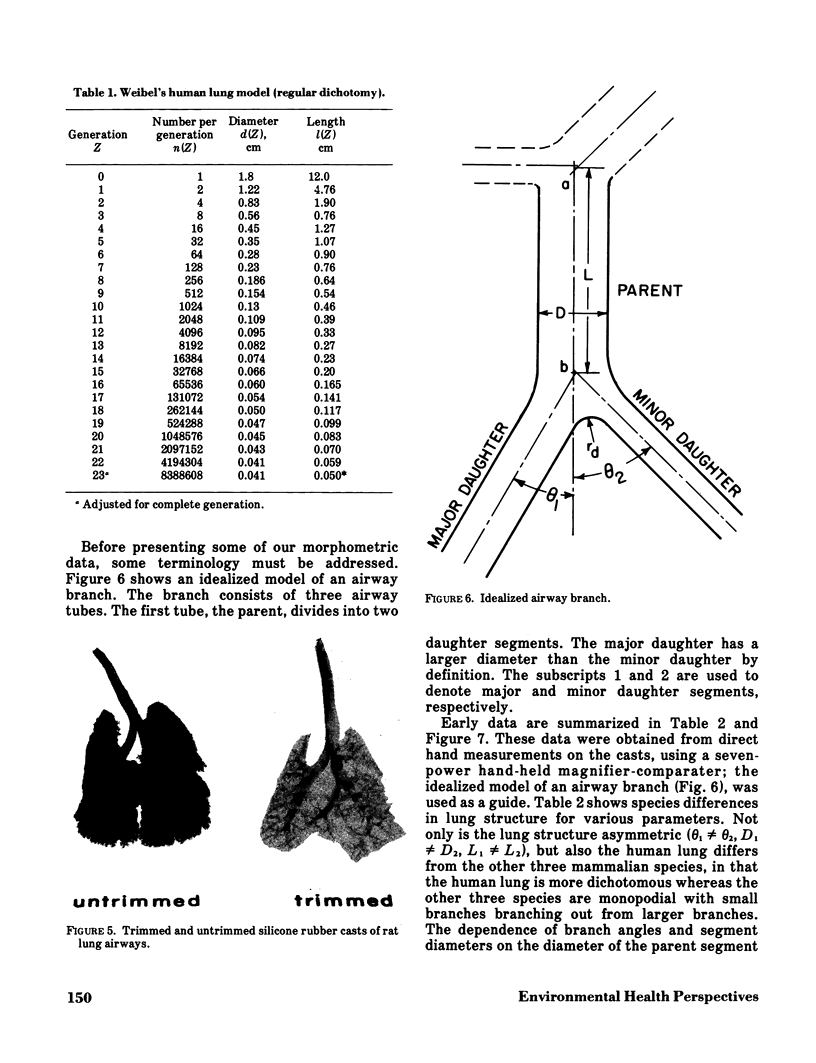

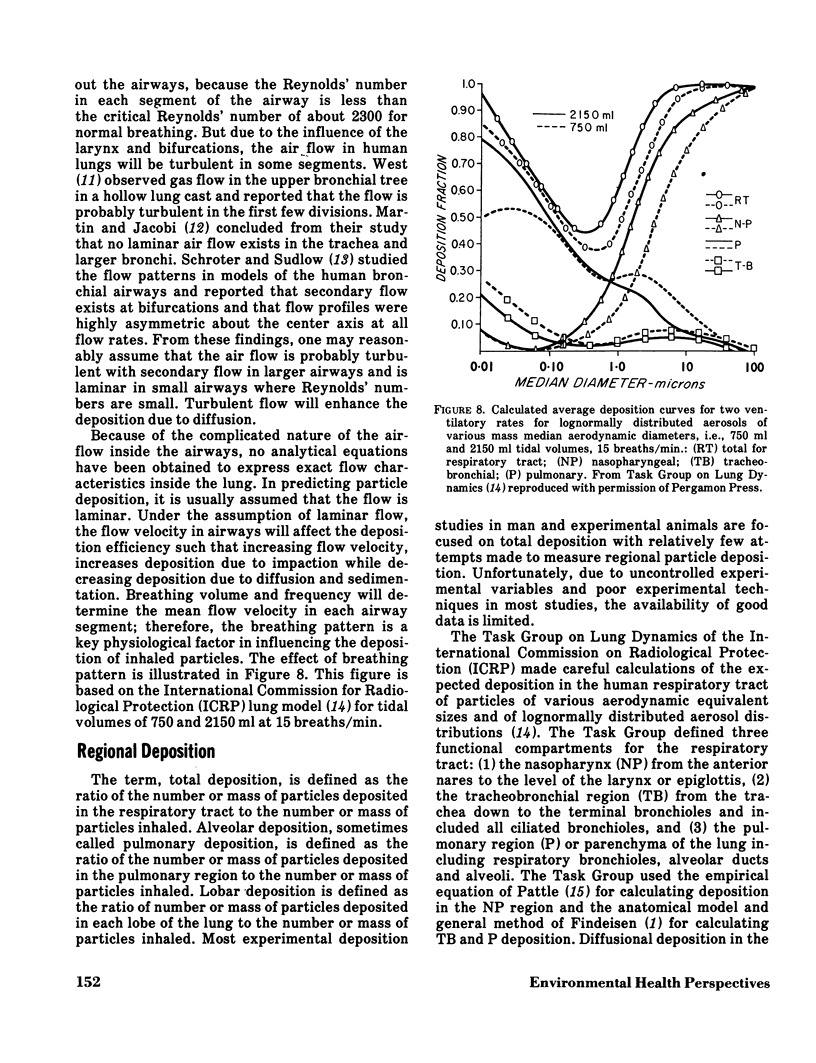

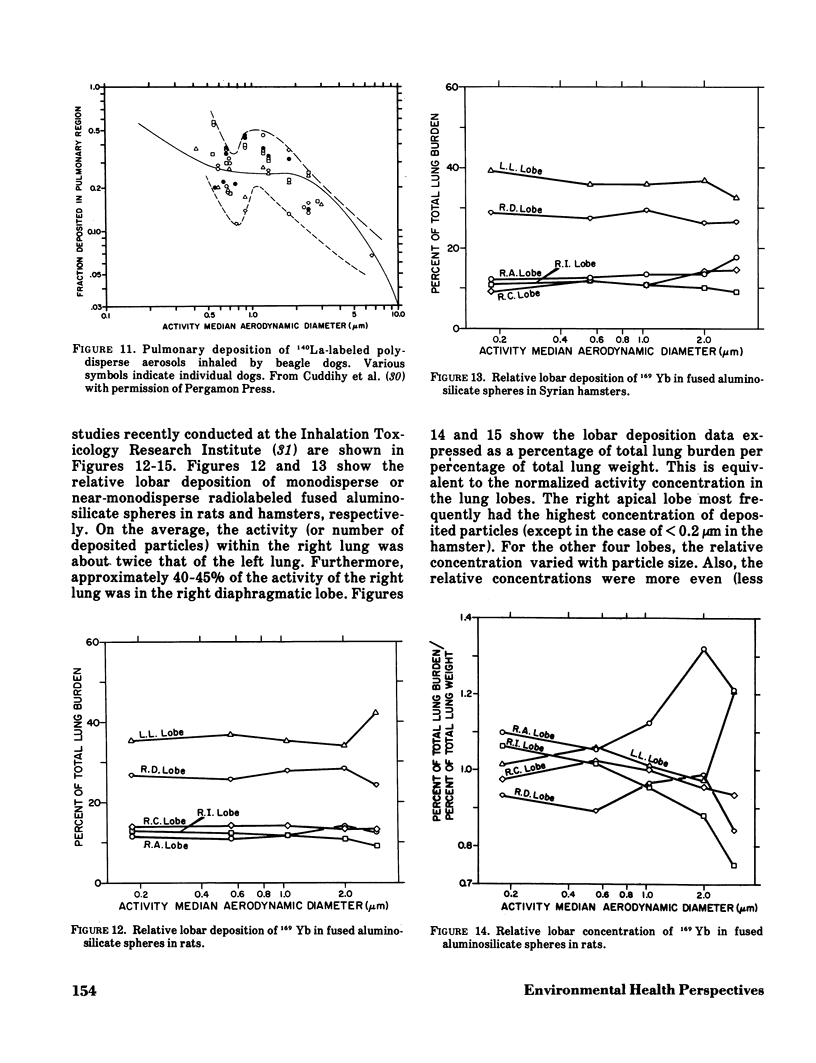
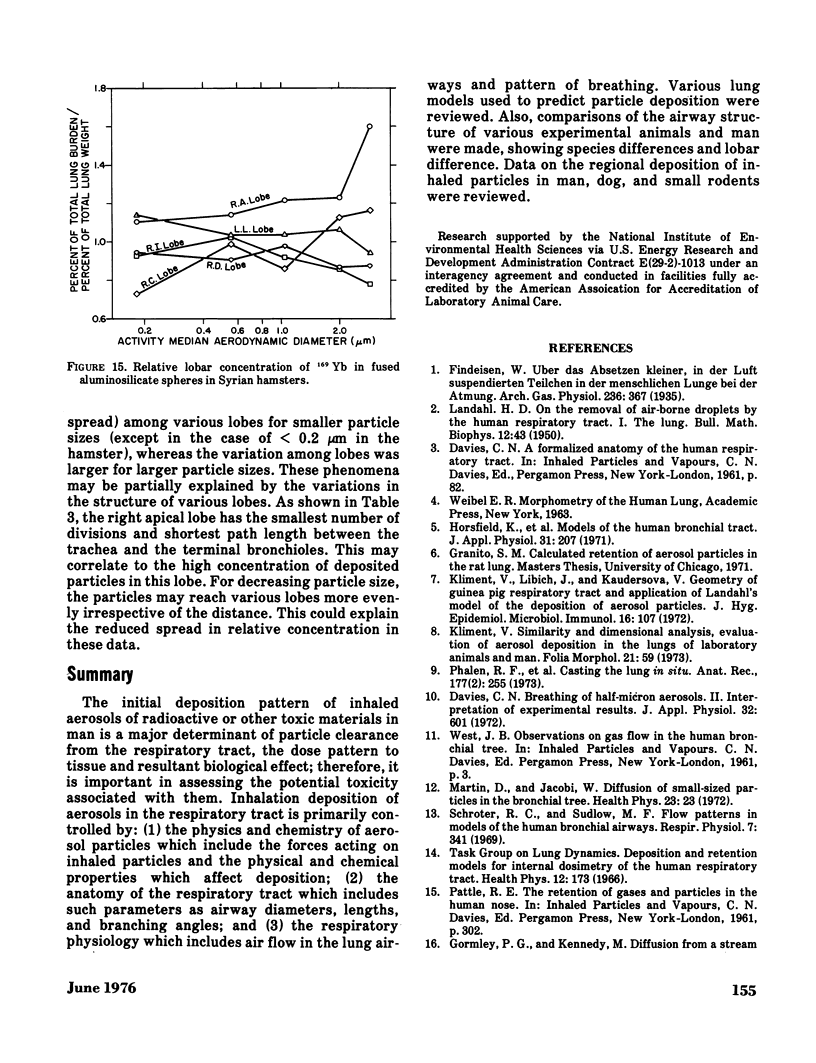
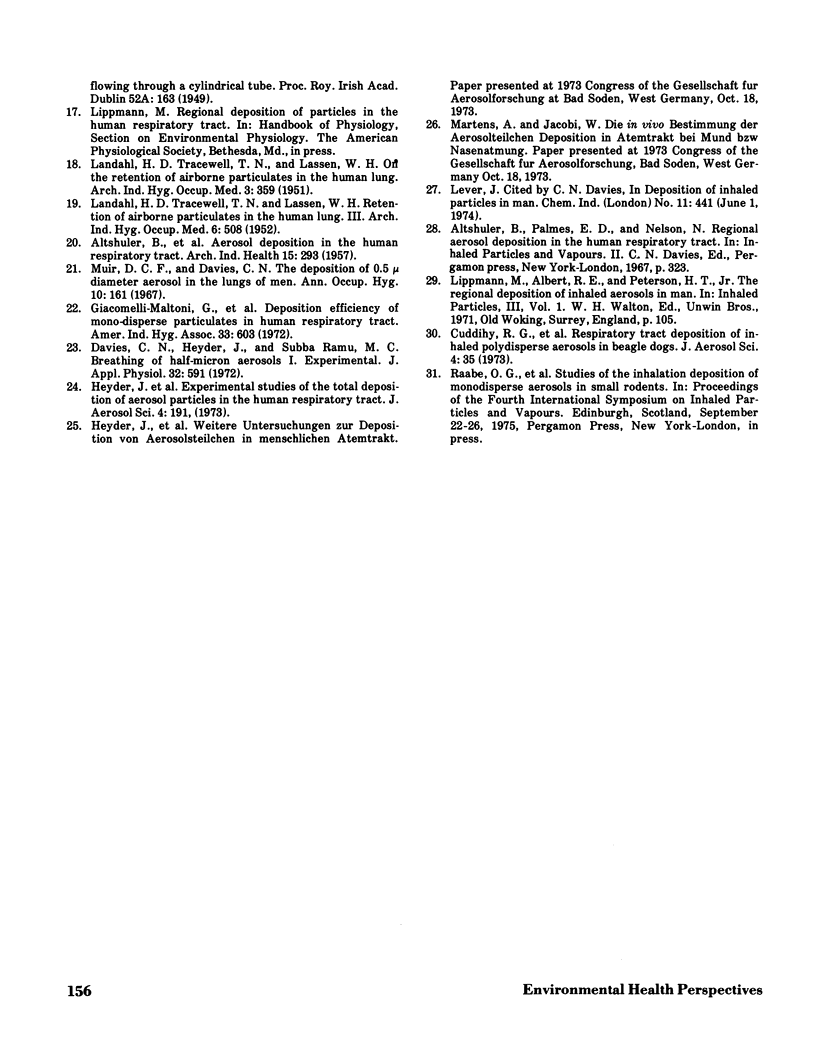
Images in this article
Selected References
These references are in PubMed. This may not be the complete list of references from this article.
- ALTSHULER B., YARMUS L., PALMES E. D., NELSON N. Aerosol deposition in the human respiratory tract. I. Experimental procedures and total deposition. AMA Arch Ind Health. 1957 Apr;15(4):293–303. [PubMed] [Google Scholar]
- Davies C. N. Breathing of half-micron aerosols. II. Interpretation of experimental results. J Appl Physiol. 1972 May;32(5):601–611. doi: 10.1152/jappl.1972.32.5.601. [DOI] [PubMed] [Google Scholar]
- Davies C. N., Heyder J., Subba Ramu M. C. Breathing of half-micron aerosols. I. Experimental. J Appl Physiol. 1972 May;32(5):591–600. doi: 10.1152/jappl.1972.32.5.591. [DOI] [PubMed] [Google Scholar]
- Giacomelli-Maltoni G., Melandri C., Prodi V., Tarroni G. Deposition efficiency of monodisperse particles in human respiratory tract. Am Ind Hyg Assoc J. 1972 Sep;33(9):603–610. doi: 10.1080/0002889728506713. [DOI] [PubMed] [Google Scholar]
- Horsfield K., Dart G., Olson D. E., Filley G. F., Cumming G. Models of the human bronchial tree. J Appl Physiol. 1971 Aug;31(2):207–217. doi: 10.1152/jappl.1971.31.2.207. [DOI] [PubMed] [Google Scholar]
- Kliment V., Libich J., Kaudersová V. Geometry of guinea pig respiratory tract and application of Landahl's model of deposition of aerosol particles. J Hyg Epidemiol Microbiol Immunol. 1972;16(1):107–114. [PubMed] [Google Scholar]
- Kliment V. Similarity and dimensional analysis, evaluation of aerosol deposition in the lungs of laboratory animals and man. Folia Morphol (Praha) 1973;21(1):59–64. [PubMed] [Google Scholar]
- LANDAHL H. D., TRACEWELL T. N., LASSEN W. H. On the retention of airborne particulates in the human lung: II. AMA Arch Ind Hyg Occup Med. 1951 Apr;3(4):359–366. [PubMed] [Google Scholar]
- Lippmann M., Albert R. E., Peterson H. T., Jr The regional deposition of inhaled aerosols in man. Inhaled Part. 1970;1:105–122. [PubMed] [Google Scholar]
- Muir D. C., Davies C. N. The deposition of 0.5 microns diameter aerosols in the lungs of man. Ann Occup Hyg. 1967 Jul;10(3):161–174. doi: 10.1093/annhyg/10.3.161. [DOI] [PubMed] [Google Scholar]
- Phalen R. F., Yeh H. C., Raabe O. G., Velasquez D. J. Casting the lungs In-situ. Anat Rec. 1973 Oct;177(2):255–263. doi: 10.1002/ar.1091770207. [DOI] [PubMed] [Google Scholar]
- Schroter R. C., Sudlow M. F. Flow patterns in models of the human bronchial airways. Respir Physiol. 1969 Oct;7(3):341–355. doi: 10.1016/0034-5687(69)90018-8. [DOI] [PubMed] [Google Scholar]



